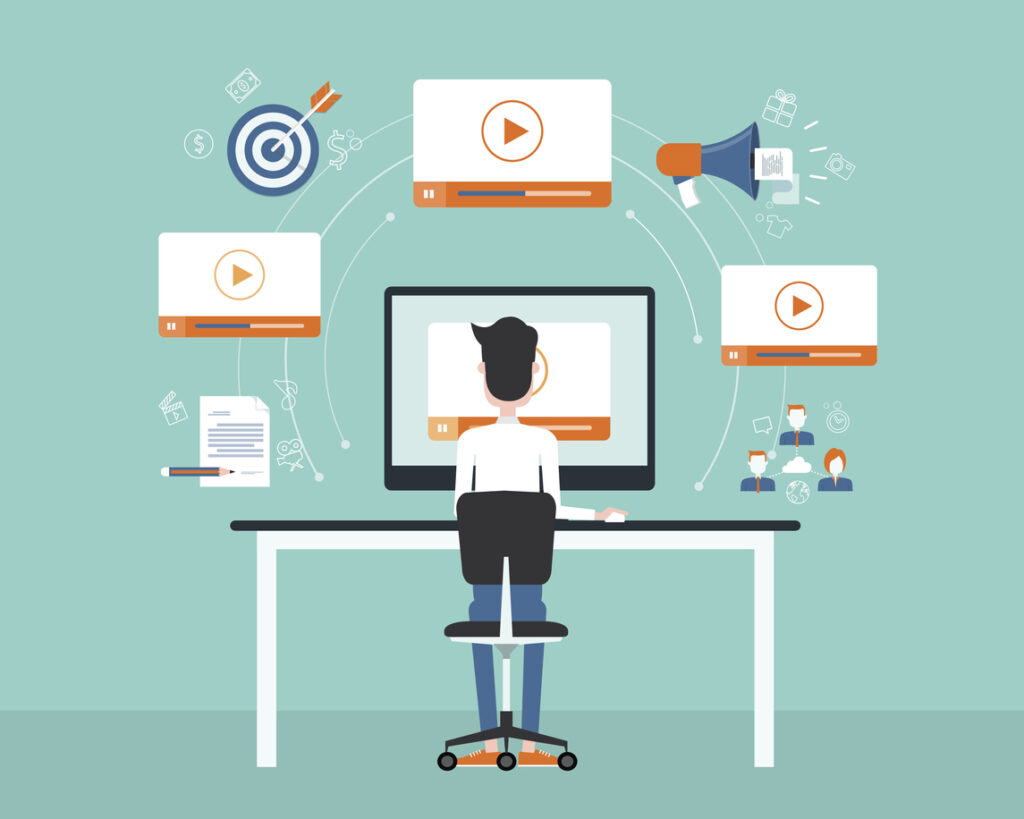Helping learners to upskill and remain a valuable member of the workforce when distractions, information overload and new technologies abound can be challenging for learning professionals today. Here are some tips to help you on your way…
When you’re trying to find a restaurant in an unfamiliar city, do you pull out a folded-up map, or do you pull out your smartphone and Google it?
As technology evolves, our expectation for how that technology can and should make our lives better evolves with it. While holding a paper map may bring out a sense of nostalgia, we know inherently that our phones will help us to navigate to an unknown location more quickly and efficiently.
And so it is with learning too. We have access to all the information we could ever want right at our fingertips. Information alone is never going to be enough when it comes to learning. The digital era requires us all to be lifelong learners. It also stresses the importance of creative problem solving and the ability to make connections in order to drive innovation.
In the digital age, we must not only be able to find and navigate information but be able to critically interpret that information. We must also be able to express ideas effectively through digital media. In the digital age we need to be digitally fluent.
At the same time we are more overwhelmed, distracted and impatient than ever before.
So here are some tips for getting it right as a 21st century learning practitioner:
1. Pay attention
If your learners are going to access anything digitally be aware that their attention span is tiny. So if it’s about learning then encourage them to switch off other notifications, get rid of distractions and give themselves the gift of paying attention.
If it’s about training then you need to make sure your digital content is relevant, high in image and video content and sustains interest.
2. Get personal
Developments in digital technology have enabled learners to choose what, how and when they learn. We want learning that is personalised, that fits our individual preferences and needs: we want a ‘one size fits one’ learning solution. A culture of self-directed learning is strongly emerging now.
3. Mix it up
Learning happens continuously, in a multiplicity of contexts and modes, supported by technologies that enable any learner to easily access internal and external information and interact with networks of experts and peers both on and off-line.
Mixing formats makes learning more effective. Choosing the right format for the right purpose is critical.
4. Keep exploring
As a learning practitioner it’s important that you own your development and continuously learn. You should also provide constant learning opportunities to your workforce, enabling them to stay relevant in their jobs and industry.
Learning design must promote inquiry, exploring and doing so that learners are able to research solutions to specific situations and build their own answer based on collective experience and existing knowledge.
5. Stay curious
Look up from your device sometimes and allow your mind to get curious about something again. Whether it’s the fact that each snowflake is unique or that the universe has countless planets and stars, immerse yourself in questions that may not have any immediate answers, and encourage your learners to do the same.
Helping learners to upskill and remain a valuable member of the workforce when distractions, information overload and new technologies abound can be challenging for learning professionals today. Here are some tips to help you on your way...
When you’re trying to find a restaurant in an unfamiliar city, do you pull out a folded-up map, or do you pull out your smartphone and Google it?
As technology evolves, our expectation for how that technology can and should make our lives better evolves with it. While holding a paper map may bring out a sense of nostalgia, we know inherently that our phones will help us to navigate to an unknown location more quickly and efficiently.
And so it is with learning too. We have access to all the information we could ever want right at our fingertips. Information alone is never going to be enough when it comes to learning. The digital era requires us all to be lifelong learners. It also stresses the importance of creative problem solving and the ability to make connections in order to drive innovation.
In the digital age, we must not only be able to find and navigate information but be able to critically interpret that information. We must also be able to express ideas effectively through digital media. In the digital age we need to be digitally fluent.
At the same time we are more overwhelmed, distracted and impatient than ever before.
So here are some tips for getting it right as a 21st century learning practitioner:
1. Pay attention
If your learners are going to access anything digitally be aware that their attention span is tiny. So if it’s about learning then encourage them to switch off other notifications, get rid of distractions and give themselves the gift of paying attention.
If it’s about training then you need to make sure your digital content is relevant, high in image and video content and sustains interest.
2. Get personal
Developments in digital technology have enabled learners to choose what, how and when they learn. We want learning that is personalised, that fits our individual preferences and needs: we want a ‘one size fits one’ learning solution. A culture of self-directed learning is strongly emerging now.
3. Mix it up
Learning happens continuously, in a multiplicity of contexts and modes, supported by technologies that enable any learner to easily access internal and external information and interact with networks of experts and peers both on and off-line.
Mixing formats makes learning more effective. Choosing the right format for the right purpose is critical.
4. Keep exploring
As a learning practitioner it’s important that you own your development and continuously learn. You should also provide constant learning opportunities to your workforce, enabling them to stay relevant in their jobs and industry.
Learning design must promote inquiry, exploring and doing so that learners are able to research solutions to specific situations and build their own answer based on collective experience and existing knowledge.
5. Stay curious
Look up from your device sometimes and allow your mind to get curious about something again. Whether it’s the fact that each snowflake is unique or that the universe has countless planets and stars, immerse yourself in questions that may not have any immediate answers, and encourage your learners to do the same.





